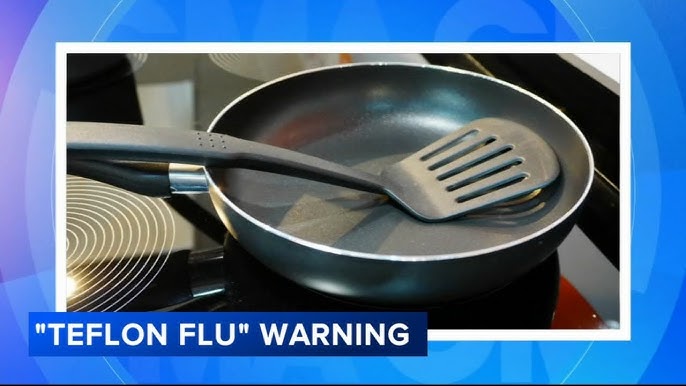Non-stick cookware, including frying pans, Dutch ovens, and saucepans, has been a kitchen staple for years due to its convenience and easy cleanup. However, growing evidence suggests that these popular items may be linked to health issues, with an alarming rise in reports of polymer fume fever.

Increased Reports of Polymer Fume Fever
In 2023, Poison Control Centers across the U.S. recorded 267 cases of suspected polymer fume fever, a significant increase from previous years. While these cases are not all confirmed and some may involve occupational exposures, the trend indicates a growing awareness of potential health risks associated with non-stick cookware. Melissa Dibble from the Centers for Disease Control and Prevention (CDC) notes that symptoms of polymer fume fever can resemble other illnesses, making it challenging for individuals to connect their symptoms with their cookware.
Understanding Polymer Fume Fever
Polymer fume fever, commonly known as “Teflon Flu,” occurs when individuals inhale fumes from overheated polytetrafluoroethylene (PTFE) coated cookware. PTFE is used in non-stick coatings to prevent food from sticking and make cleaning easier. However, when these coatings are exposed to high temperatures, they can release toxic gases, as detailed in an article by the National Institutes of Health (NIH).
Dr. Kait Brown from America’s Poison Centers explains that Teflon Flu is a specific type of polymer fume fever caused by breathing in fumes from PTFE heated beyond its safe temperature. Symptoms typically include headaches, fever, chills, muscle aches, weakness, coughing, nausea, and a bad taste. These symptoms generally last between one and two days. Pets, especially birds with sensitive respiratory systems, can also be adversely affected by these fumes.
Preventing Polymer Fume Fever
To minimize the risk of polymer fume fever, it is crucial to follow the manufacturer’s temperature guidelines for non-stick cookware. Dr. Brown advises against leaving an empty Teflon pan on high heat and warns against using such cookware in ovens hotter than 500 degrees Fahrenheit. Using a kitchen exhaust fan while cooking can help reduce the concentration of fumes in the air.
The NIH reported a case in December 2012 involving a Japanese man who experienced flu-like symptoms after inhaling fumes from an overheated PTFE-coated pan. The man had left a pan of boiling water on the stove, which eventually burned and released hazardous fumes. After seeking medical attention, he was treated with oxygen and recovered within a few days. This case highlights the importance of vigilance when using non-stick cookware and adhering to safety recommendations.

As awareness grows about the potential health risks associated with non-stick cookware, it is essential for consumers to stay informed and take preventive measures. While the increase in reported cases of polymer fume fever is concerning, following proper usage guidelines and understanding the risks can help mitigate these health concerns.
